The best ereader for 2024: top ebook readers from Kindle, Kobo and more
The best ereaders are perfect for reading and productivity too
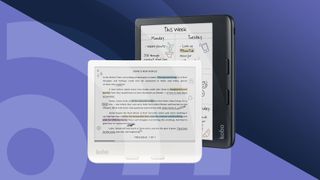
Despite the best ereaders coming from a few different brands, most people still call them 'Kindles'. However, with competition from the likes of Kobo, Onyx Boox PocketBook, Barnes & Noble and others, you're no longer restricted to choosing one of the best Kindles for your digital reading. In fact, ereaders today are more than just for reading ebooks – most of them have audiobook support, several are also writing slates, while others will even allow you to browse the web.
So how do you choose the best ereader? You do that by figuring out what exactly you want from your e-paper tablet: do you need waterproofing? Would you prefer one-handed use? Do you need to jot notes? Is a color screen important to you?
Once you've figured out what exactly you want from your reading device, you can use our list of the best ereaders below to find what's right for you and your budget. Every single one below has been tested thoroughly too.
Whatever your needs, all ereaders use similar E Ink technology which, at the time of writing, is the Carta 1200 screen for black-and-white models, although the next-gen E Ink Carta 1300 display made its debut in a Kobo earlier in 2024, and the new Kindles announced in October have also adopted it. This display is faster and offers more contrast than the Carta 1200, so text appears blacker and sharper. The best color display is the E Ink Kaleido 3 screen technology, although colors appear slightly muted compared to what you'd see on your phone or tablet. A new display called E Ink Gallery 3 was supposed to debut in 2023 with the promise of more saturation and sharpness, but that seems to have run into issues unknown. Until then, below are your best options.
Recent updates
October 2024: Amazon has announced four new Kindles for 2024, but because we haven't fully tested them yet, we haven't added them to our list of the best ereaders. Instead, we've added mentions of them where they might replace an older model. We have also removed listings that are no longer available.

Sharmishta is TechRadar's APAC Managing Editor and spends most of her free time buried in a good book. It's how she got into ereaders in the first place – going digital due to a lack of space to store her books and being able to carry her entire library with her wherever she went. She's been testing ereaders for about six years now and has appeared on Singaporean radio twice to speak about e-paper tablets.
The quick list
Want to cut to the chase and find out which ereaders are the absolute best? Take a look below. You can also jump to a more detailed review of each ereader further down the page, and our price comparison tool will help you find the best deals.
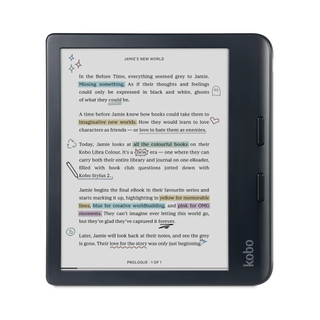
Best for most people
Keeping everything that made the Kobo Libra line our pick of the best ereader for years, the Kobo Libra Colour adds a color screen to mix, plus stylus support. And at a price that's not all that much more than its predecessor, it's excellent value for a full-featured ereader.
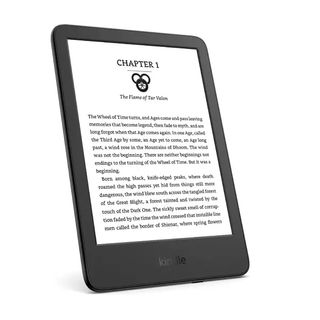
Best budget ereader
The 2022 edition of the Amazon Kindle base model ereader is lighter than any previous iteration. It's the best ereader for anyone on a tight budget or looking for a small, pocketable Kindle if you can still find it in stock – a 2024 upgrade has been announced.
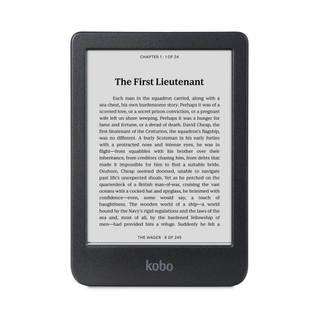
Best mid-range ereader
With a body made mostly from recycled plastic, a screen that's currently the best grayscale option from E Ink and the ability to repair the device, there's a lot going for the Kobo Clara BW. Better performance and more on-screen contrast make this the best 6-inch ereader on the market.
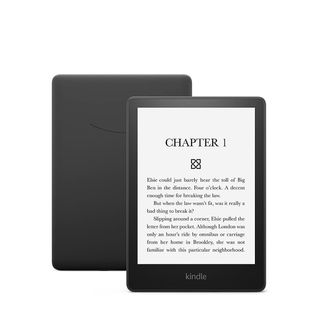
Best Kindle
Released in 2021, the 11th-gen Kindle Paperwhite is bigger and better than any that came before. It boasts a bigger 6.8-inch screen and a bigger battery. It was also the first Kindle to get a USB-C charging port. Amazon has announced the 12th-gen upgrade that could be the best Paperwhite yet.
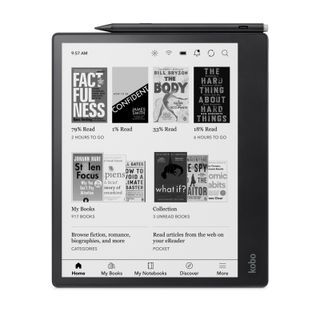
Best ereader for students
A 10.3-inch note-taking ereader is expensive, but a large screen is not just great for reading, but writing on as well. You'll find it useful if you're a student, researcher or do a lot of journaling – not only can you scribble in margins of purchased books, there are advanced writing tools to help keep notes in order.
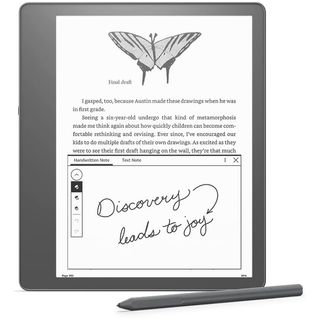
Best premium ereader
It's arguably the best optimization of an E Ink Carta 1200 screen on any e-paper device that makes the Kindle Scribe worth buying. A metal finish rounds up the luxurious reading experience on a large screen, but the 2024 model will get you AI features too if money is no object.
Load the next 3 products...
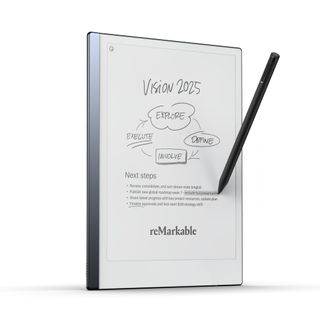
Best for writing
While it's not technically an ereader, the reMarkable 2 deserves a spot in this guide as the best e-paper tablet for writing. When it comes to allowing you to focus on creativity alone – whether it's writing or sketching – this is the best there is, although it is rather expensive.
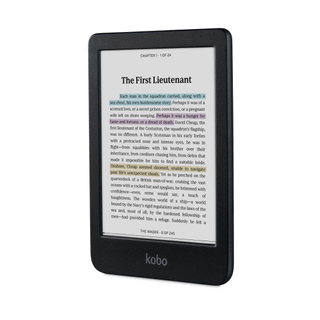
Best color ereader
It may not have all the bells and whistles of some of the other ereaders on this list, but if it's a color screen on a budget you're after, the Kobo Clara Colour is it. This compact 6-inch package is arguably the cheapest color ereader on the market, but you won't get any writing features here.
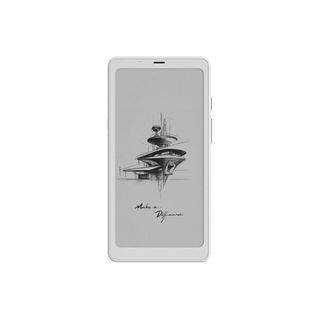
Best compact ereader
It looks remarkably like a phone but it won't make any calls. It will, however, allow you to download Android apps from the Google Play Store and read in black and white without as much eye fatigue. It's not cheap, but there's really nothing like it on the market right now.
The best ereader for 2024
Why you can trust TechRadar
Below you'll find full write-ups for each of the best ereaders in our list. We've tested each one extensively, so you can be sure that our recommendations can be trusted.
The best ereader overall





Kobo Libra Colour
Our expert review:
Specifications
Reasons to buy
Reasons to avoid
✅ You want a mid-range ereader with plenty of features: The balance between price and feature set is really good, offering good bang for buck.
✅ You want to operate your ereader in one hand: The page-turn buttons and asymmetrical design makes it easy to hold and use the Libra Colour in one hand.
✅ You want a relatively open ecosystem: Other than its audiobooks, Kobo doesn't lock you into its own platform, allowing you to easily sideload files or borrow from a library.
❌ You plan to make a lot of notes: The 7-inch screen feels too small to take full advantage of Kobo's Advanced Notebooks. A larger screen would be better for that.
❌ You don't need a color display: You can save money by opting for a grayscale ereader if color content isn't important to you.
Announced in April 2024, Kobo has replaced its Libra 2 ereader with a color version and also added stylus support. Launching at a price not all that much more than its predecessor, the Kobo Libra Colour takes over as our best overall ereader by offering a good balance between price and feature set.
Like the previous two Libra ereaders before it, we found the Libra Colour's 7-inch display to be just the right size for the average reader – not too small, not too large – and it retains the asymmetric design that makes it handy to use single-handed. In fact, it's a touch lighter than its predecessor, coming in at 199.5g compared to the Libra 2's 215g.
The color screen is the headline here, though. Even if you don't read much color content like comics or graphic novels, we found that the reading experience is enhanced when just seeing a book cover displayed the way it's meant to be – in color.
Plus you now get writing features on Kobo's mid-range ereader. You need to buy the Kobo Stylus 2 separately though, but considering the Libra Colour is launching at a price only slightly higher than the previous model, we'd say that's a fair bargain.
And not only is 85% of the ereader body made with recycled plastics, the packaging it ships in is fully recycled and recyclable, with the ink used to print the images and text on the box made from soy, which makes it biodegradable. It's also IPX8-rated waterproof.
Another reason we love the Libra Colour is its repairability. While we didn't get to try it when we reviewed this e-paper tablet at launch, you can buy spare parts from iFixit and also get step-by-step instructions on how to fix things like replacing battery or screen, or even changing the motherboard, all to increase the lifespan of the device.
Everything else we love about the more premium Kobo devices is here – 32GB of storage, access to OverDrive, Pocket and Kobo Plus directly from the tablet, plus cloud file transfer via Google Drive and Dropbox. File and font support is also still pretty good.
Read our full Kobo Libra Colour review
The best budget ereader




Specifications
Reasons to buy
Reasons to avoid
✅ You want a compact ereader: At 6 inches, the Kindle can fit into any bag, even a large pocket, so you can take it anywhere.
✅ You're budget-conscious: It might be more expensive than its predecessor, but it's still well priced considering it's got more features than the older model.
❌ You want a larger screen: As portable as it is, you may find a 6-inch screen too small as you could be turning pages frequently, thus eating into the battery life.
❌ You don't want to spend extra on a case: There's not a lot of grip here, which could make this small ereader feel insecure in your hand. A case will help add that grip.
It took Amazon about five years to update the base Kindle model in 2022, but only another two to update it again with the 2024 edition. Until we fully test the latest model, we would still recommend the 2022 Kindle here if stock can be had at third-party retailers. That's mainly because it's cheaper than its successor and still an excellent budget device that would be ideal for kids too.
A different blue color than the usual black was like a breath of fresh air when budget ereaders all look the same (there are better color choices in the 2024 range) and, like some of its Kobo rivals, it's partially made from recycled plastics.
As much as we appreciate the slight design refresh, we found the screen to be way better than the older Kindle models, with the E Ink Carta 1200 tech adding snappier responses, clarity and, more importantly, a 300ppi resolution (a massive jump from the older 167ppi) that really makes everything on screen pop. The display even supports a dark mode.
However, there's still no way to change light temperature here, and it also misses out on any kind of waterproofing. We also found that the smooth rear panel makes the 2022 Kindle a little insecure in the hand, and you'd likely want a case to get some grip. Plus the 6-inch screen could be too small for anyone who likes the font size on the larger side, which means you're turning pages quite often, eating into the battery life. Still, the small size makes it very portable indeed.
While we think the waterproofing and the additional features of any Kobo ereader make the Clara BW (see below) a more worthwhile option for a small-sized ereader, the Kindle is cheaper in comparison and it would be remiss of us to leave it out of this buying guide.
Read our full Amazon Kindle (2022) review
Check out our hands-on Amazon Kindle (2024) review for our first impressions on the newest edition
The best mid-range ereader





Specifications
Reasons to buy
Reasons to avoid
✅ You want the latest E Ink screen: The E Ink Carta 1300 makes it mainstream debut on the Clara BW and it's the best we've seen to date.
✅ Repairability matters to you: It's perhaps one of the few ereaders models that have official spare parts available via iFixit, with detailed guides on how to repair it.
❌ 6 inches is too small a screen: While many readers would prefer the compact size of the Clara BW, several others would find it too small a display.
❌ You want more features: This is a dedicated ereader – you'll need to look elsewhere if you want stylus support and other features.
We were fans of the Clara line of ereaders from the start, but Kobo has outdone itself with the Clara BW. Adopting the latest generation E Ink display was a brilliant decision because the screen on the Clara BW is not just snappy, we found it to be the sharpest e-paper display we've tested to date.
And while that's the only major upgrade over the Clara 2E, Kobo has added repairability to its 2024 range of devices. Thanks to a partnership with iFixit, spare parts are available to purchase alongside repair kits and step-by-step guides. Whether your ereader will need a new screen at some point or a new battery – you're sorted. This extends the life of the device, keeping it out of landfills.
Its eco-friendly credentials don't stop there – like its predecessor, most of its body is recycled plastic, and the packaging is also fully recycled and recyclable too. Even the ink used to print on the boxes is soy, so biodegradable.
That's where the changes stop – you still get only 16GB of onboard storage and the same 1,500mAh battery. That said, we found the battery life to be a lot more consistent now as compared to what we experienced with the Kobo Clara 2E when we tested the older model. Waterproofing is also been inherited.
While you get all the other Kobo trappings here – OverDrive and Pocket support – there's no way to easily transfer files via the cloud, like there is on the more expensive Kobo ereaders. With no Google Drive or Dropbox support, we had to resort to sideloading books ivia a wired connection to a laptop or PC during our testing.
Audiobook playback is still there but, again, only the ones purchased from the Kobo Store or downloaded as part of a Kobo Plus subscription will play.
Read our full Kobo Clara BW review
The best Kindle




Specifications
Reasons to buy
Reasons to avoid
✅ You predominantly source titles from the Kindle Store: If you're already locked into Amazon's ecosystem, the Paperwhite offers a good balance between price and feature set.
✅ Screen size matters: A bright and larger screen means your reading experience is better any time and anywhere.
❌ You have your own collection of ePUBs: While you can sideload the epub file format now to a Kindle, you still have to jump through a hoop or two.
❌ You've got a tight budget: Opting for a smaller screen will save you money and get you similar features too.
We still think the 11th-generation Kindle Paperwhite from 2021 is the best Kindle you can buy, thanks to its water-resistant design and crisp, bright E Ink display. The Paperwhite's 6.8-inch display is a great size for reading on as compared to a 6-inch tablet, but Amazon has announced the 12th-generation Paperwhite with a 7-inch E Ink Carta 1300 display, which should outperform this model – we still need to test it, so until then, the previous iteration is still our choice for the best Kindle.
We like the adjustable warm light for reading in the dark, and the slim design with a flush screen is appealing and easy to read.
At launch this only had 8GB of storage, but in 2022 Amazon added a 16GB model to the mix, making it all the more desirable. Or you can shell out for the 32GB Paperwhite Signature Edition if you have the cash to spare (which also gets a 2024 upgrade). The Signature Edition also adds wireless charging, a unique ereader feature. We don't think that's terribly necessary though, so we rate the standard Paperwhite higher once you factor in the price.
Even the standard Paperwhite is a little pricey for a Kindle, but perhaps a refreshed model will see more features added without the price hiking up, thus adding more value for money. Even so, the Paperwhite is an excellent ereader, and our pick of the best Kindle, particularly if you're already embedded in Amazon's ecosystem (aka already subscribed to Kindle Unlimited and Audible).
Read our full Amazon Kindle Paperwhite review
Take a look at our hands-on Amazon Kindle Paperwhite (2024) review for more information on the latest model
The best ereader for students





Specifications
Reasons to buy
Reasons to avoid
✅ You're a student, teacher, researcher or are into journaling: The note-taking features here are par excellence, particularly the Advanced Notebook option, which makes it the perfect replacement for pen and paper.
✅ You want your scribbles exported as typed text: While handwriting recognition is available on other models, Kobo does it well... as long as your scribbles aren't too bad.
✅ You want a rechargable stylus: Kobo's updated stylus can be charged via USB-C, making it lighter and longer lasting.
❌ Writing is a superfluous feature: Considering its feature set, the Elipsa 2E offers good value for money, but only if you will make full use of its writing capabilities.
❌ Looks matter: It might have great features, but the Elipsa 2E is just another plastic tablet.
If you can't decide between a tablet or an ereader, the Amazon Kindle Scribe might be a tempting option, but Kobo Elipsa 2E wins here for a few simple reasons.
It offers a bit more open ecosystem than a Kindle, with plenty of file and font support, plus the usual Kobo perks of Dropbox connectivity (to transfer your notes and ebooks wirelessly), OverDrive support (to borrow library ebooks) and the baked-in Pocket app to read long-form web articles offline.
And, if you will make full use of its extensive writing tools, there's a lot more value for money here than the Kindle Scribe or the Onyx Boox Note Air series tablets, particularly for students, teachers or researchers. The Advanced Notebooks allow you to insert flowcharts, drawings, formulae and much more into the notes and, heck, some simple mathematical equations will even be solved for you.
Its 10.3-inch screen is great for reading, particularly if you're into comics and graphic novels (albeit displayed in black and white), and an upgraded processor means it's a lot faster and more responsive than its predecessor (we're replacing the original Kobo Elipsa with the new model on our best ereader list for that reason).
Our only gripe with the new Elipsa 2E is that it doesn't ship with a sleepcover like the older model did, meaning you're spending a little extra to ensure the redesigned Kobo Stylus 2 – which is also better than the older pen Kobo made – is stowed away securely at all times.
Read our full Kobo Elipsa 2E review
The best premium ereader




Specifications
Reasons to buy
Reasons to avoid
✅ You want a bright screen: With an ambient light sensor on board, the Scribe's screen is hands-down the best ereader display on the market.
✅ You deal with a lot of MS Word and PDF files: You can edit both Microsoft Word files and PDFs easily, then export back to your computer.
❌ You need a full writing suite: As lovely as the screen is to write on, the Scribe's writing features are comparatively limited.
❌ Money is tight: Getting the best reading experience possible means shelling out a decent chunk of change, especially if you throw in the optional sleepcover too.
If money is no object and you want the most luxurious reading experience a digital ebook reader can give you, then the Amazon Kindle Scribe takes over from the Kindle Oasis. That's because Amazon has completely killed off the Oasis line, although the new 2024 Kindle Scribe with AI writing features might be one to consider if money was truly no object.
The metal body of the Kindle Scribe is reminiscent of the Oasis, but lacks the two page-turn buttons on the larger bezel, but that 10.3-inch screen is just beautiful to read on. Admittedly it's not quite as portable and can feel heavy when held in one hand, it's still marvelous to use... and write on.
Yes, like the Kobo Elipsa 2E, the Scribe ships with a stylus for writing and drawing. At launch, its writing capabilities were very limited, but Amazon has slowly but steadily been expanding its flagship ereader's features, so much so that you can actually read Microsoft Word documents on it. Signing on documents in PDF format is a breeze – just email it to your associated Kindle email address. And the stylus glides beautifully over that bright screen – it's hands-down the best writing experience according to our review. That said, we'd still recommend the Kobo Elipsa 2E as the better writing tablet because of its Advanced Notebook feature.
No matter how wonderful the writing experience and how great it is to read on, the Scribe is expensive. So you could still opt for the Kindle Oasis for a premium reading experience if your main criteria is digital reading and portability, but there's no getting away from the fact that the large screen has some serious oomph.
Read our full Amazon Kindle Scribe review
Our hands-on Amazon Kindle Scribe (2024) review offers our first impressions of the latest writing tablet
The best ereader for writing





Specifications
Reasons to buy
Reasons to avoid
✅ You write or sketch a lot: Designed to suit users who need to take copious amounts of notes or be creative.
✅ You want the thinnest e-paper tablet yet: Not only does it look beautiful, it's the slimmest tablet in this category.
❌ You want a more versatile ereader: While you can sideload ebooks, it doesn't offer the best reading experience.
❌ Value for money is important: You'll get more bang for buck if you opt for alternatives from Kobo or Amazon, with built-in bookstores, frontlights and more.
There is now a reMarkable Paper Pro writing tablet with a color screen, but given its rather high price tag, the reMarkable 2 is still our pick for the best writing e-paper tablet. It's an absolutely gorgeous 10-inch tablet, one that actually has tiny little feet on the rear to prevent slipping, and one that's currently the thinnest device in this category to date.
We've tested the reMarkable 2 over a few years – once after it was launched, then again in May 2024 following a slew up software updates that, we found, significantly improved the usability of this no-distraction note-taker. We found that writing and sketching on the reMarkable is arguably the best experience, and that's despite the Kindle Scribe having the best screen in this category. There's a plethora of pen choices, nib thicknesses and template options to take care of most of your creative needs.
We also found that the minimalist interface actually has a lot going on, including the ability to convert handwriting into text, share notes via email, change page template for individual pages within a notebook and so much more. And if you have the extra cash for the keyboard folio, the reMarkable 2 becomes a lovely e-paper laptop that works well for typing out articles.
Where it falls short is as a reading device. There's no front lighting here, so you can't use it in the dark, and there's no bookstore to access. While you can sideload ebooks, the reMarkable 2 only supports EPUBs and PDFs, so you need to make sure your titles are converted first. If reading on the reMarkable isn't priority, then this is hands-down the best writing tablet there is.
Read our full reMarkable 2 review
The best color ereader





Specifications
Reasons to buy
Reasons to avoid
✅ You want an affordable color ereader: Arguably cheaper than any other color ereader out there, the Clara Colour is making color content more accessible.
✅ You want to borrow library books: Whether ebooks or digital magazines, if your local public library supports OverDrive, you can save money by borrowing titles.
❌ You want a stylus: This is an entry-level ereader, with no writing features.
❌ You need a larger screen: A 6-inch display isn't for everyone. If you think you need more screen real estate, opt for a 7-inch ereader instead.
When it comes to color ereaders, it's hard to recommend any particular one as the displayed colors on all of them look slightly washed out. That's not the fault of the ereader; that's just the tech. However, if you ask us, we'd pick the Kobo Clara Colour as arguably the cheapest mainstream color ereader available right now.
While we think that the 6-inch color display may be a touch too small for comics or graphic novels, it's still a good entry point to making color content accessible. In fact, if we were asked for a recommendation, we wouldn't hesitate to say that the Clara Colour would be a good first ereader for someone looking to get started with digital reading. Sure, there are cheaper grayscale options available, but something has got be said about seeing a book cover displayed in color on an ereader.
And, as a Kobo ereader, it's got a lot more going for it with a relatively more open ecosystem than Amazon's Kindle, plus good file and font support. 16GB of onboard storage, Bluetooth connectivity to pair wireless headphones for audiobook enjoyment and IPX8 waterproofing rounds up its other important features.
Importantly, it gets an upgraded processor that we found improves performance over the Clara 2E and the Kindle base model significantly.
Like the Libra Colour and Clara BW (listed above) it was launched alongside, the Clara Colour has also been made with recycled plastic and comes in fully recycled and recyclable packing. It's repairable like both its 2024 siblings, with parts and instructions available via an official partnership with iFixit.
Read our in-depth Kobo Clara Colour review
The best compact ereader





Specifications
Reasons to buy
Reasons to avoid
✅ You want a phone-sized ereader: The only e-paper device to mimic the look and size of a phone, the Palma easily slips into a pocket.
✅ You want access to Android apps: From reading apps to mobile games, you get full access to the Google Play Store as the device runs Android 11.
❌ You want a stylus: This is an entry-level ereader, with no writing features.
❌ You need a larger screen: A 6.13-inch display with a 2:1 aspect ratio isn't for everyone.
❌ You want something cheaper: Being an unique device and boasting a lot of features makes this a rather expensive – and novel – purchase.
There's nothing quite like the Onyx Boox Palma on the ereader market – it's a palm-sized device that can easily be mistaken for a phone. Except it won't make any calls and it's got an e-paper screen. It's even lighter than some of the phones it mimics, making it the perfect device for anyone looking to move away from reading on an LCD or OLED screen to a more comfortable E Ink display.
What we really appreciated when we tested the Palma was that, like a lot of phones, it's has a lot of onboard storage, but if 128GB isn't enough for you, there's also a microSD tray to expand the capacity. That means you can load up thousands of ebooks, several audiobooks, music files (yes, there's a player app built in) and anything else you can think of to take on your travels without affecting your baggage allowance. It lacks waterproofing, though.
Like any phone today, there's a built-in speaker and, also like a phone, we found that it sounds better if you use the Bluetooth 5.0 connectivity to pair wireless headphones to enjoy your music and audiobooks.
Running a fat-free version of Android 11, the Palma gets you access to the Play Store and, with a pretty powerful CPU and decent graphics, you can actually play some mobile games – it really is impressive how well the screen handles graphics. During out testing, we played a couple of graphics-heavy games and were utterly amazed at how well it could handle them. That said, don't expect phone-like performance here – there is still a wee bit of stuttering and all your games will be in black-and-white only.
While there really is a lot to recommend the Palma, we think it would have been a better device if Onyx had added stylus support too. It would also make it easier to justify the high price tag as there are 6-inch ereaders that are a lot cheaper than it. However, there's nothing else on the market like it and that alone could be justification enough for some users.
Read our in-depth Onyx Boox Palma review
Ereader FAQs
What is an ereader?
It might look like a boring tablet, but an ereader is designed specifically only for digital versions of books, whether novels or comics, fiction or non-fiction. All ereaders – also called ebook readers – use a special display that makes reading in any kind of ambient lighting condition easy. These displays have a look that resembles the texture of paper (not the feel), and that's easy on the eyes.
Since they perform only a single task – display ebooks – they don't use powerful processors and can be slow to refresh. However, this doesn't affect the performance of an ereader and, in fact, allows the battery life to go on for weeks on a single charge.
An ereader typically comes with 8GB of storage, if not more, and can store hundreds of titles. That means you can carry your entire library with you on holiday.
Do you really need an ereader?
Whether you need a dedicated ereader will depend on how much you read books and whether you're comfortable spending the extra money on a reading device. If you're an avid reader and keep buying new titles, you'll find that going digital can help you save on storage space for your books as well as save you money in the long run as ebooks are typically cheaper than the printed versions. Admittedly you'll be spending a decent chunk of change on the ereader itself, but you'll find that it pays for itself soon enough. Moreover, some ereaders allow you to borrow library books, which can save you even more.
And if you have the habit of reading during your morning commute, an ereader is a lot lighter than carrying an actual book.
It can be argued that reading on your phone or tablet is just as good, and while that's true for the most part, the e-paper screen on an ereader is designed to reduce eye strain. So if you read a lot before bed, it's definitely worth considering an ereader, particularly one that allows you to adjust its frontlight's temperature to warmer hues.
Kindle vs Kobo: what is the difference?
While the devices themselves are largely similar, there are a few differences between Kindles and Kobo ereaders. For starters, the former is widely available in any market Amazon operates in, but Kindles can lock you into Amazon's ecosystem by pushing you to purchase titles only from the Kindle Store.
Kobo also has its own bookstore accessible via its ereaders, but the ecosystem is a lot more open and sideloading books you already own is a lot easier. Kobo's file support is wider, as is its font support. In fact, you can even sideload Amazon's dedicated fonts like Bookerly and Ember if you prefer them.
Then there's borrowing library books – while both devices give you that option, Kindle users can only do so if they live in the US. If you happen to reside elsewhere, you might want to consider a Kobo, provided your local library has OverDrive support (you can ask them before you decide to buy an ereader).
Kobo devices are typically a little more expensive, but then you also get more device choices from the Japanese-Canadian ereader brand. And if you're after a note-taking device, we think Kobo is the way to go.
Find out more about how to choose between a Kindle and a Kobo ereader.
Which ereader is better for library books?
If your main source of reading material would ebooks from your local library, then it's best to opt for a Kindle or a Kobo device. Both with allow you to access your local library's ebook catalogue from anywhere (as long as you are connected to a Wi-Fi network), but keep in mind that Kindles only support borrowing from American libraries. If you live outside of the US, a Kobo would be a better option.
Kobo devices work with the OverDrive service that lets you borrow in regions including the US, UK, Australia, New Zealand and Singapore (amongst others). If you want to own your books, the Amazon marketplace is much larger than Kobo, and has a huge self-publishing component for finding independent authors.
Can I listen to audiobooks on an ereader?
As long as an ereader has Bluetooth connectivity, you should be able to pair a set of wireless headphones to listen to supported audio files. While brands like Onyx and PocketBook will allow you to sideload audio files, including audiobooks, Kindle and Kobo devices only support those purchased from their respective stores.
In fact, some Onyx and PocketBook ereaders have built-in speakers, so you may not even need headphones to listen. However, don't expect great sound quality from them because, like your phone, they're small drivers and the sound would be better via a connected pair of headphones.
Also keep in mind that audio files are typically larger than ebook formats, so if you're storing a lot of these on your device, you'll need to keep an eye on how much space you've got left.
What fonts can my ereader support?
Most ereaders will support some basic fonts natively and you won't need to tinker with them at all. However, if you do want to change things up, a Kindle or a Kobo is a good idea as they both make it easy to change fonts on the device.
You'll find that the Kindles have some custom fonts designed by Amazon, with Bookerly and Ember being the most popular ones. We found that the list of fonts on Kindles is extensive enough that we didn't find the need to sideload more, but you can if you need to.
Kobo devices also have their own set of default fonts, but there's no rule against sideloading more, including Amazon's own custom ones like Bookerly. And sideloading is as easy as plugging your Kobo ereader into a computer and moving your desired font to the device's fonts folder.
How to choose an ereader
While your budget is arguably the most important consideration when choosing the best ereader for you, it's also important to keep in mind what you really want from that device.
Consider the screen and the user interface as your starting points. The former should be clear and easy to read, but also feature a good light, while the latter should be streamlined and easy to use use. You also need to figure out if a grayscale display will suffice or whether you need a color screen.
Storage capacity might be important to voracious readers who would likely have hundreds of titles in their digital library, if not thousands. While 16GB of internal storage is becoming the norm – and that's plenty for thousands of titles – some brands offer expandable storage via microSD cards. These become even more important if you prefer listening to audiobooks as these files are larger than ebooks.
This means you also need to consider file formats that the ereader can support natively. Some devices offer broader file support than others, so check your existing library or online bookstores to see what the most common format is (ePUB is typically quite common). Also check if your ebook are DRM-locked as your ereader may support the file format it's in, but only without DRM. A broad font support can also be handy to have.
Lastly, if you're not keen on buying new titles, you'll want to pick up an ereader that allows you to borrow from a local public library either natively or via a third-party application like Libby.
The secondary considerations to keep in mind would be the importance of waterproofing and whether you really need stylus support.
What is the difference between an ereader and a tablet?
If you already own a tablet – whether an iPad or an Android – do you really need another device for reading digital books? An ereader has limitations, but for reading it can be far superior to a more extensible tablet.
1. E Ink technology
The main difference between an ereader and an iPad you will notice immediately. The ereader screen is almost always grayscale, using special E Ink technology that is very crisp and specialized for fonts and text. It refreshes relatively slowly and it sometimes leaves a trace (ghosting) that needs to be refreshed.
E-ink screens also don't flicker like a normal screen, making it more comfortable to read for a longer period of time.
2. Battery life
While you might hope to get a day of use out of your iPad, an ereader tablet measures battery life in weeks. Because the screen only refreshes when you turn the page, it draws very little power. Our favorite ereaders have a backlit screen, but those LED lights don't use much battery. If you read for 30 minutes a day or so, you can get a few months of battery life with our top pick devices.
3. Blue light filter
While dark mode has become quite common in recent times and many modern electronic screens automatically adjust their displays depending on ambient lighting, there's no filter to reduce blue light. The best ereaders, however, use front lights with a white to yellow hue that's better for the eyes (and your sleep pattern) as compared to phones and tablets.
4. Affordable and convenient
If you are mostly reading books, an ereader tablet is a bargain over an iPad. The base model Amazon Kindle 2022 is a bare fraction of the price of an iPad or a Samsung Galaxy Tab, while large-screen ereaders like the Kindle Scribe and Kobo Elipsa can be had for an equivalent price or for not that much more than a base model iPad (depending on where you live). If books are your main thing, stick with an ereader and save money versus a tablet.
How we test the best ereaders
There might be ereaders aplenty in some markets, but not all of them are available extensively. So our first step in testing an ereader is to determine whether it can be purchased by a wider audience than just a single market, even if it's an import.
If an E Ink tablet meets that criteria, we then test ereaders based on the display and specs – aka the responsiveness of the touchscreen as well as clarity, plus things like storage and Bluetooth connectivity. This, in combination with its price tag, will determine its value-for-money rating, which is quite important in our books.
We follow that up with how user-friendly the interface is and whether there's easy access to ebooks and audiobooks via a native store or third-party apps. We also take into consideration file support for each device, which is necessary if you already have an existing library of digital books.
With several years under the belt in testing ereaders in all shapes and sizes, we're confident that our star-rated reviews are the best indication of quality and usefulness of the ereaders in this list. There are no sales/marketing teams involved in our verdicts, which means if we don't like it, we simply won't recommend it.
- You've reached the end of the page. Jump back up to the top ^
Get daily insight, inspiration and deals in your inbox
Sign up for breaking news, reviews, opinion, top tech deals, and more.

While she's happiest with a camera in her hand, Sharmishta's main priority is being TechRadar's APAC Managing Editor, looking after the day-to-day functioning of the Australian, New Zealand and Singapore editions of the site, steering everything from news and reviews to ecommerce content like deals and coupon codes. While she loves reviewing cameras and lenses when she can, she's also an avid reader and has become quite the expert on ereaders and E Ink writing tablets, having appeared on Singaporean radio to talk about these underrated devices. Other than her duties at TechRadar, she's also the Managing Editor of the Australian edition of Digital Camera World, and writes for Tom's Guide and T3.
- Philip BerneUS Mobiles Editor